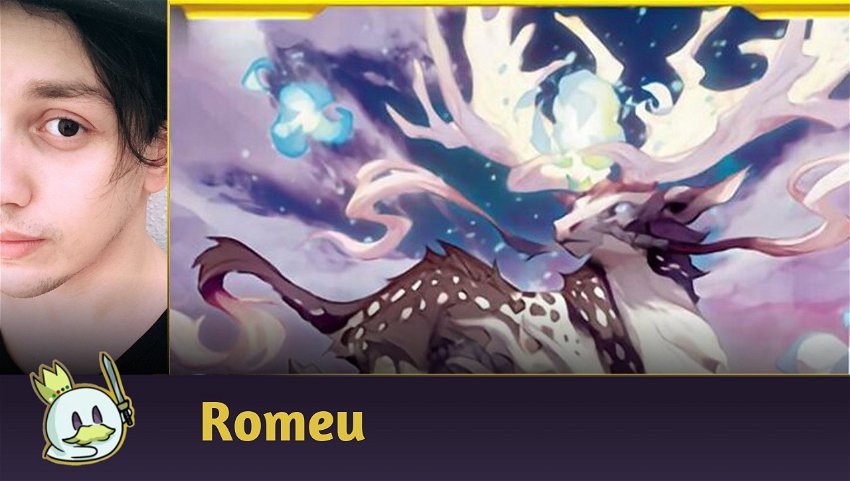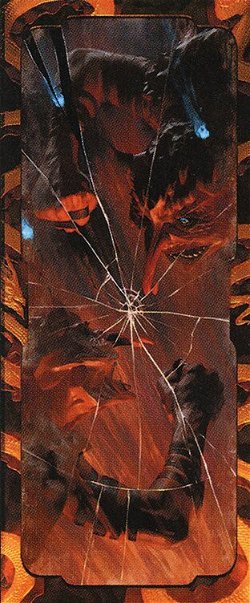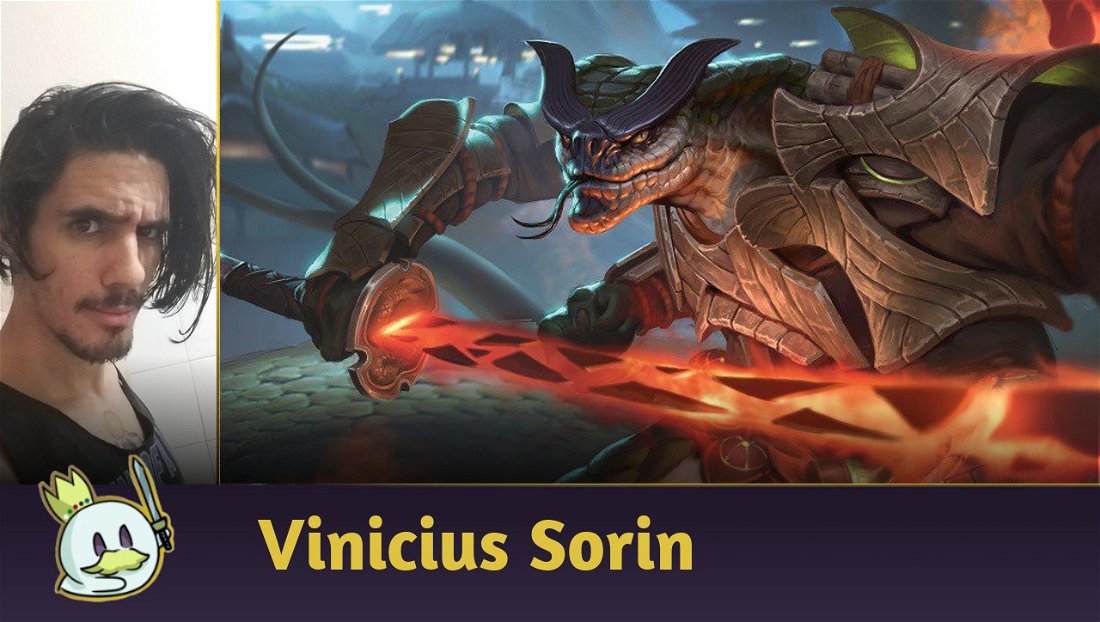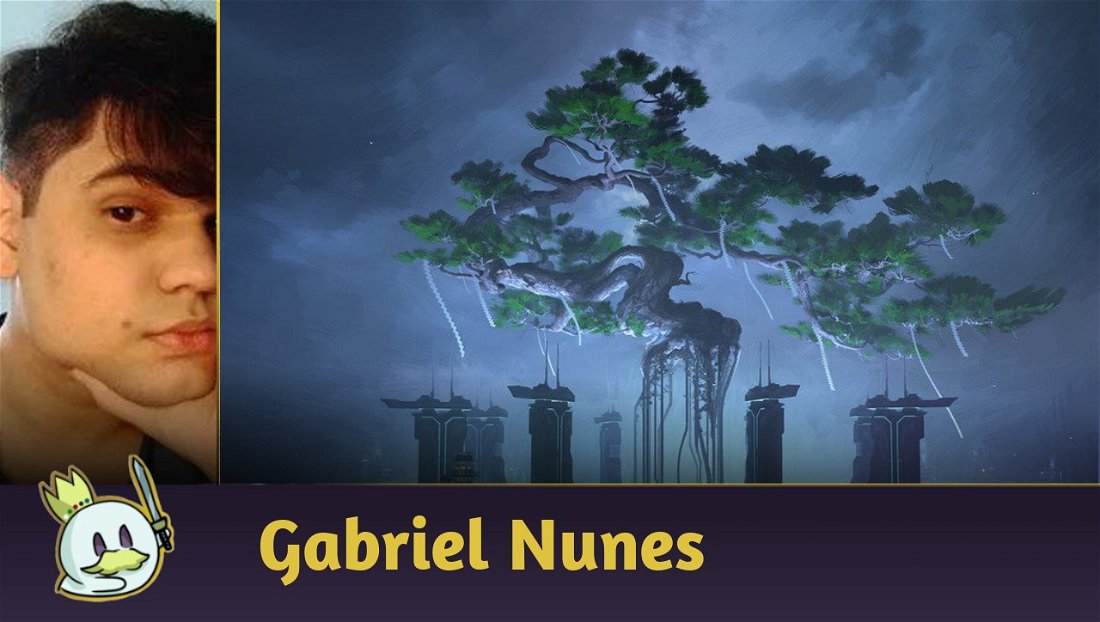Allow me to start this article with a curious fact:

During preview season, I was pretty certain that Hinata, Dawn-Crowned was a Commander exclusive card because everything in it indicated that: It was revealed the same day as some Commander exclusive spoilers, it is a creature three-color legendary that doesn't specifically fit a set theme, has a good, evasive body, and its abilities are easy to leverage in multiplayer formats.
That is, Hinata has literally everything a Commander-only card would normally have, and I only found out that it was Standard-legal when I read an article about how Kamigawa's new legendary creature opened up the possibility to cast Magma Opus for two mana.
And after seeing the first results of the new deck, I can't imagine a situation where Hinata, Dawn-Crowned won't define the Metagame and Jeskai Hinata won't become the absolute best Neon Dynasty Standard strategy, with a real possibility to break the format by offering an already very consolidated base the possibility of cheating in mana and taking advantage of a powerful spell, and that in many ways reminds me of Historic's Jeskai Turns, which played Magma Opus with Mizzix's Mastery.
Of course, we don't specifically count on Time Warp and Mizzix's Mastery in Standard, but even though we're still at the beginning of the format, some strategies are so evidently powerful that it doesn't take long to realize their potential, this is the case with Jeskai Hinata.
But it's better if we dig a little deeper to better understand the deck, the format, and why I think this will be the next broken archetype in the game.
What is Jeskai Hinata?

In short, Hinata, Dawn-Crowned + Magma Opus is the best thing you can be doing in Magic Arena right now, and there are many variations to the list as players experiment with ideas, but I think this list, which placed fourth in last Saturday's Standard Challenge, serves as an example.

This deck is, in essence, a Midrange similar to Izzet Dragons, which seeks to establish fair 1-for-1 trades while accumulating advantages from 2-for-1 effects like Expressive Iteration and Prismari Command, in addition to high-impact threats like Goldspan Dragon and a powerful late-game finisher capable of turning the game in your favor even in an unfavorable position, with Magma Opus.

The notable inclusion is in the white splash for Hinata, Dawn-Crowned and other support cards and/or effects that become relevant in a scenario where many players are opting for the archetype, like Valorous Stance that works both as a removal and to protect your threats.

The advantage of piloting this deck is that Hinata significantly reduces the cost of spells that would already be naturally good, while also increasing the cost of interactions that the opponent can have against your creatures or spells: Magma Opus now costs two mana with it in play, Shatterskull Smashing will always cost 2 less, Lorehold Command will only cost three mana if you choose to deal 3 damage to any target and make a player gain 3 life, Prismari Command only costs two mana, or one if you create a token, while traditional removals only cost one and Negate basically becomes a Stubborn Denial, and all this thanks to the presence of a creature 4/4 with Flying and Trample on your board.
While the above version is very focused on taking advantage of Kamigawa's new Legend, there are many variations popping up in the events, and it won't be long before more experienced players find the ideal version for the Metagame, and we've seen variations that don't focus so much in taking advantage of the new card.

There are still other versions emerging, some with a more combo-oriented proposal when playing Galvanic Iteration with Magma Opus or Alchemist's Gambit, or versions that bet on a more Midrange-oriented proposal with four copies of Hinata and Goldspan Dragon, and while each has its pros and cons, it's still early in the season, and it's hard to evaluate which one will actually become the best for the Metagame.
Why Jeskai Hinata is Standard's next best deck
Now that you've been formally introduced to the new archetype, let me explain why I believe it has the potential to break Standard again, or become the absolute best deck in the format, point by point.
Its list is made up entirely of naturally good cards
Basically, most of the spells that we see being played in the lists would already be commonly included in their respective archetypes as per the needs of the Metagame. Cards like Prismari Command were finding their space in the format and participated in the composition of archetypes that were already among the pillars of the format, such as Izzet Dragons and Izzet Turns, in addition to the Grixis variants.
What Hinata, Dawn-Crowned does is improve them. As I explained above, it essentially turns Abrade into Fiery Impulse that can destroy artifacts, Lorehold Command becomes Lightning Helix with perks for one more mana, Prismari Command now costs virtually one mana, and so on.
We are, once again, upon a Combo-Control strategy
I have some conclusions about Magic that are regularly absolute regarding Constructed formats with more contained power level, as is the case with Standard, Pioneer or Pauper, and one of them is that Combo-Control can always break the format because they are too efficient in destabilizing the metrics of the proposal of these formats in establishing the longest game, as they can easily adhere to the best Late-Game with the possibility of closing the game suddenly, allowing them to play well against archetypes that choose to apply pressure instead of interacting.
Recently, we saw with Izzet Epiphany how the presence of a Combo-Control polarizes the format to the point that you need to play with the deck, or play under it, with no exceptions and no room for options that try to break this pattern and propose the “fair game” because that means always having to play around the Combo, while the opponent can simply go into a Fair Game with an efficient beatdown plan while protecting their threats.

Magma Opus is a ridiculously powerful spell that has never seen much play in Standard because there were better options for eight mana, like casting Galvanic Iteration and Alrund's Epiphany in the same turn, and Hullbreaker Horror seemed like a more efficient way to close the game in Epiphany's absence.
Hinata's inclusion entirely changes this parameter because casting a bomb for two or three mana is simply absurd, while Magma Opus still retains the quality of being able to be used at the beginning of the match to speed up the game, and it is also necessary consider how Galvanic Iteration can potentiate it, creating an irreversible game state at the end of your opponent's turn, as you'll stack 8 damage on any number of targets, 12 power on the board (two 4/4 tokens and Hinata), four cards in hand and four tapped permanents, which can be either blockers or lands, in addition to dealing with possible Hall of Storm Giants or Den of the Bugbear that are on the battlefield, without mention that when resolved on the stack, Hinata's controller has priority, giving them all the space to cast the first Magma Opus for two mana before the opponent can have any opportunity to interact with the spirit, limiting them to avoiding the combo only across counterspells or discard effects.
That is, Galvanic Iteration + Magma Opus + Hinata, Dawn-Crowned may essentially become a 3-card combo that will win the game on the opponent's end step for eight mana (or four, if you untap with Hinata in the previous turn), without even considering the variants that are playing Alchemist's Gambit as an extra turn, and this composition giving birth to a new Combo-Control is extremely dangerous for Standard.
Hinata is both engine and threat simultaneously, and for a very efficient cost
Recently, Vinicius wrote an article about how to evaluate a card for Commander, but I think we can apply some of his ideas in a broader context.
According to his theory, there are several characteristics of values that can be assigned to a card according to the context of each deck or format, and here I will use two specific values: The Resonant Value and the Individual Value.
Resonant Value has the characteristic of enhancing your game or disrupting the opponent through some specific effect, such as trigger duplication, cost reduction or increase, among other factors that will improve your other spells or worse theirs. In short, the value ofa card in this category “resonates” from it and affects other cards that make up a deck, a good example in Standard is Luminarch Aspirant, which significantly increases the power of your biggest threats, but does not usually have space as an individual threat on the battlefield.
Individual Value are cards that do things "on their own" and don't specifically need a support to be good because they are extremely self-sufficient in playing their role as a threat, a great example of this is Goldspan Dragon, which offers a 4/4 body with immediate impact and still generates mana acceleration through Treasure tokens.

In Standard's context, Hinata possesses both Individual Valor and Resonant Valor.
Typically, spells with Resonant Valor don't do much beyond their function of making other cards in your deck better. Creatures like Luminarch Aspirant might demand immediate answers because they commonly make the situation get out of hand if they stay on the board for too long, but they often don't pose a threat on their own, and that makes them a commonly bad topdeck if the board is clear, and if you consider the other cost reducers at Standard currently, none of them really pose a threat.
But Hinata, in the worst-case scenario, is always a 4/4 creature with Flying and Trample, able to end the game in a few turns if it is well protected and/or if the opponent fails to respond to it properly, and the resonant value makes it significantly easier to protect, or in taking advantage of its cost reduction on the same turn it hits the table.
Due to how Standard functions, and considering that its ability is cumulative to the number of targets, there is no reason why a player would choose another threat in this slot for this strategy because Hinata is basically a better version Atsushi, the Blazing Sky (which has Individual Value and Assigned Value, that is, you depend on other external factors to extract an advantage from it).
Would it be better if Hinata was a 2/2 creature, and thus only carry Resonant Value? Maybe, because there would be a concession in playing it for four mana only to lose it to a Play With Fire, and possibly force the archetype to need to adopt more threats, which wouldn't be a problem since there's no shortage of good creatures to Izzet these days.
Hinata + Magma Opus is already considered the best thing to do in Standard
It's still the first week since Kamigawa: Neon Dynasty came out, the format has received a number of powerful new cards in this new release, but it's already apparent to most players and content creators that the best option you have for the format right now is to combine Hinata with Magma Opus.
Despite not winning any of this weekend's Challenges, Jeskai Hinata reached a total of 11 Top 32 placements, with more than half of them being in the Top 16, and three Top 8 placements at Sunday's Standard Challenge.
To me, this doesn't symbolize (yet) that the archetype is absolutely broken, but it demonstrates how many players really trust that this strategy is the best for the format currently, and despite the perception of "best deck" in a healthy Metagame often change every week, it's not common for the first week after the big hit of a set to be comprised of a "new" archetype.
if Jeskai Hinata is as powerful as it seems, what should we do?
Sit back, watch, wait, try to adapt and avoid the panic button
I have no problem considering that I could be wrong in all of my statements, and I'm the last person to want to hit the panic button and say a format is broken within the first week.
We're still getting to grips with Neon Dynasty and there are plenty of possibilities with new cards that need to be explored before we assume the Metagame is solved and need another ban, and I truly believe we have to make significant room for a format that has just come out of a direct intervention followed by a release, and despite already being considered the best option currently, Jeskai Hinata seems more passive to interaction than Izzet Epiphany used to be, and opens up more gaps for opponents to capitalize on top of playing under or knowing how to interact well with their respective threats.
However, with the next Set Championship being in Alchemy, it won't surprise me if we have a rebalance of Hinata, Dawn-Crowned's abilities later on so that she doesn't interact as well with Magma Opus, possibly reducing costs to just 1, rather than for each target, if it proves too dominant through the tournament.
I can't say what will happen to it in Standard, and I suppose if direct intervention is needed, Magma Opus might take the hit, which would technically resolve the "broken play" made possible by the new creature.
So, I think our best option in the coming weeks is to wait and try out new ideas and strategies to find the points where an archetype can catch up with the new best deck in the format, while we analyze, through the results and statistics, how prevalent it actually becomes.
Conclusion
That's all for today, and I consider that despite seeming an imminent threat to the format, Jeskai Hinata presents another proposal for Standard using one of the most powerful cards that didn't have a home in the competitive scenario yet, bringing, along with other cards from Kamigawa: Neon Dynasty, a big renewal for a format that has been stagnant for quite some time and is still adapting to the recent bans.
The coming weeks will tell what we can expect, and how much the new set will really impact the Metagame. And if we need to worry about Standard's health once again.
Thanks for reading!














— Comments 0
, Reactions 1
Be the first to comment